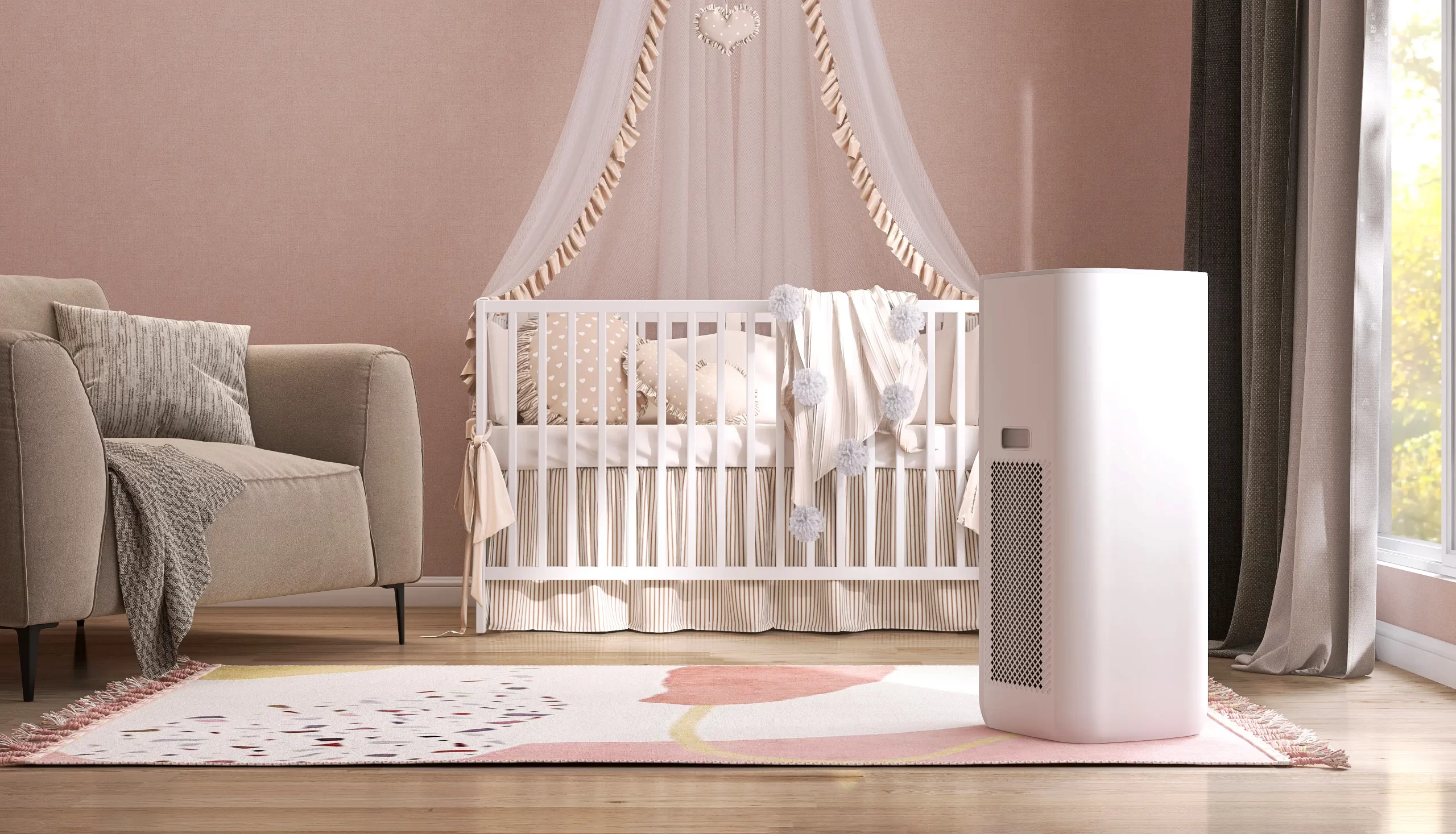How to Make an Old Crib Safe for Your Baby

As a loving parent, ensuring your baby has a safe place to sleep is a top priority. While antique or handed-down cribs hold nostalgic value, older crib models may lack updated features that reduce safety risks. Properly restoring an aging crib to meet modern safety standards takes attentive work, but allows you to reuse these timeless sleep spaces while prioritizing your child’s wellbeing.
Step 1: Assess the Crib’s Current Physical Condition
Before updating safety features, conduct a thorough physical assessment of the crib’s current state. Look for:
Structural Damage
- Check all structural joins: Carefully inspect the joints where sides, slats, and base panels meet for any loosening over time. Try gently pushing or rocking each corner to test for creaks or movement.
- Scan for small cracks: Peer closely along the entire interior and exterior surfaces for small cracks or splits in the wood, especially near joints. Knock gently to listen for areas that sound hollow.
- Look for missing sections: Damage like missing slats, cracked joinery corners, large holes, or absent mattress support ledgers are concerning. If left unrepaired, these areas put your baby at risk.
- Inspect paint and finishes: Make sure to use cribs manufactured after 1978 when lead-based paints were banned. Look for worn, chipped, or peeling paint and aged clear-coat finishes that could indicate the use of unsafe vintage materials.
Even minor loose joints or small cracks can expand into hazardous weaknesses. Carefully checking for structural wear protects your baby.
Fit with Mattress
- Check mattress dimensions: Place the crib mattress inside and ensure it lies flat with the long side flush against both end panels. When centered, there should be no more than 2 finger widths between the mattress edges and crib sides. Any larger gaps present a risk of limbs becoming stuck which could lead to injury. For narrow older cribs, purchase a mattress specially sized.
- Evaluate mattress thickness: While regulations mandate crib mattress thickness to be 6 inches, older ones could be thinner. Ensure the mattress adequately supports your baby’s developing spine by meeting thickness guidelines. Thin mattresses also leave dangerous head entrapment spaces along the sides.
- Test mattress height adjustments: Make sure adjustable height mattress platforms lower fully when pressed down. Then check they lock securely into place at all heights. Try shaking the crib with a mattress set at both the highest and lowest settings while side latches are engaged to confirm sturdiness.
Placement Safety
- Assess nearby hazards: The planned nursery area should be hazard-free with safe distances between the crib and nearby windows, blinds/curtain cords, wall outlets, or heating equipment according to safety guidelines.
- Check flooring: Carpeted flooring with ample slip-resistant padding is ideal. Tightly fasten any casters on legs/bases to prevent rolling.
Take measurements and inspect the space carefully to ensure a gap-free mattress fit and hazard-free nearby placement.
Step 2: Update to Current Crib Safety Standards
After physically inspecting the crib and space, update any outdated components to meet mandatory modern safety requirements:
Convert to Stationary Sides
- Immobilize drop sides: If the crib has vertical drop side rails that shift up/down to aid access, these must be disabled. Permanently fasten in the “up” position using secure metal brackets attached with bolts (not screws) to prevent future dropping.
- Install fixed side panels: As an alternative, replace old moveable sides with new stationary side panels meeting the updated crib safety standards. Then refinish for an integrated look.
Moveable drop sides were once common but now pose grave risks of failure and entrapment.
Add New Structural Safety Features
- Attach mattress support: Secure firmly to the crib end panels with metal beams that run across the crib’s width and length to support the mattress. This prevents downward movement that leaves dangerous small spaces along edges once the baby can stand.
- Install slat covering: If slat spacing exceeds 2 3/8 inches, use fitted mesh netting or nylon panels secured tightly to the sides to cover gaps. Leave no unprotected openings large enough to allow heads or limb entrapment when limbs are stuck attempting to climb out.
- Reinforce stability: For tall older crib styles, permanently fasten sturdy brackets into stud-anchored walls to prevent tipping over.
Use Only Unpainted, Untreated New Wood
- Avoid lead paint: Since lead-based paints were once common, use only new wood pieces for missing or broken slats/spindles replaced during restoration. Verify any newer wood elements don’t have toxic finishes or preservative stains.
- Prefer solid wood: Reclaimed wood could have unseen weaknesses or traces of older finishing materials over time even if it appears new. Opt for new solid wood elements over composites that compromise long-term durability and breathability.
Step 3: Prepare New Mattress and Accessories
Outfitting your crib restoration with the right supportive mattress and breathable, safety-focused accessories finishes a secure sleep space.
Choose a Mattress Design for Safety
- Select “infant” or “crib” model: For safety, pick a mattress specially engineered for baby-specific needs, not a generic mattress cut to size.
- Ensure snug gapless fit: Measure carefully against interior dimensions to provide a flush side and ends fit.
- Get low VOC emissions: Seek plant-based materials like organic cotton and natural latex layers for optimal breathability. These emit fewer toxins and reduce suffocation risks.
- Check firmness level: Pick an extra firm mattress under 120 lbs compression so baby won’t sink in too deeply once mobile. This makes moving easier.
- Choose a waterproof layer: Since infants have frequent diaper leaks or spit-up incidents, a waterproof outer layer keeps the inner materials dry and hygienic. But avoid older vinyl layers that could emit potential toxins over time from the plasticizer chemicals.
Use Only Breathable Bedding
- Skip pillows: Nothing should go under a baby in the sleep space including pillows or cushions during the first year while at risk of suffocation.
- Avoid loose bedding: Never use loose blankets, quilts, sheepskins, or sleep positioners due to entanglement and suffocation potential.
- Try a wearable blanket: A specially fitted wearable blanket or sleep-sack offers warmth without loose materials. Otherwise, place the baby fully above a tightly tucked-in sheet and lightweight blanket reaching no higher than the chest.
- Secure potential hazards: Make sure no cords, toys, bumper pads, or mobiles pose entanglement hazards. Select a mesh canopy accessory over the crib rather than a vintage textile one tied to corners. Check ties frequently for any loosening.
Careful mattress and accessory selection reduces safety hazards from gaps, toxins, and suffocation risks.
Step 4: Maintain Diligent Safety Habits
Alongside restoring older equipment and accessories to excellent condition, parents must maintain diligent daily safety habits:
Monitor and Replace Worn Parts
- Conduct weekly checks: Periodically check for emerging cracks or loosening as materials slowly age, and promptly replace any dubious elements.
- Watch as the baby develops: Lower adjustable mattress platforms as soon as the baby can pull up on hands and knees. Then monitor closely so you can intervene immediately once attempting to stand.
- Replace early: Swap out mattress, mesh canopies, and other soft elements after 2-3 years max for greatest safety margins. Don’t wait for visible wear since unseen weaknesses could lead to failure. Reuse older wooded structural elements longer with careful inspection.
Secure the Space
- Ensure night lighting: Use a tableside lamp or night light to allow bedtime visibility checks while avoiding bright overhead glare.
- Keep space tidy: Never allow toys, mobiles, or clutter in or near the sleeping space where items could fall onto the baby.
- Secure firmly: Check anchoring straps and wall mounts weekly to confirm equipment cannot be pulled over or moved. Engage every stability precaution to prevent tipping accidents.
Follow Safe Sleep Steps
- Place baby properly: Always put baby to sleep flat on back until rolling over independently to avoid airway obstruction. Then transition to bare crib once persistently rolling.
- Control bedding: Dress baby warmly in sleeper clothing instead of loose blankets. Stop swaddling once you show signs of attempting to roll over.
- Breastfeed when possible: Breastfeeding boosts immunity and lowers SIDS risk so pursue whenever feasible. Otherwise, offer a pacifier for soothing once breastfeeding is well-established.
Remain Vigilant About Safety Updates
- Keep appraised of guidelines: Check agency notifications yearly for new findings driving safety guideline revisions
- Review upon moving: When transitioning nursery spaces, re-verify room setup meets all requirements
Crib Safety Tips
- Choose a crib made after 2011 that meets all current Consumer Product Safety Commission standards – older used cribs or drop-side cribs often lack important protections.
- Ensure your crib mattress fits snugly – no more than two fingers width between the edge and sides of the crib. A loose mattress increases suffocation risks in dangerous gaps.
- Confirm crib slat spacing is under 2 3/8 inches to avoid head or limb entrapment – cover wider openings with mesh netting secured to sides if modifying an old crib.
- Eliminate strangulation hazards like cutouts or corner posts that could catch clothing – opt for basic styles meeting safety standards.
- Select an infant-specific extra firm crib mattress at least 6 inches thick to reduce the suffocation risk of flimsy or worn hand-me-down options.
- Skip all soft bedding like loose blankets or bumpers which raise the chances of SIDS, suffocation, and strangulation in the baby crib.
- Monitor frequently and lower adjustable mattress platforms quickly once your baby can stand – high platforms let them climb and fall in old cribs.
- Check for aging paint, finishes, or outdated preserved woods that could contain lead paint or toxic elements, especially in drop-side cribs.
- Place crib safely away from windows, drapes, cords, and heaters while on non-slip level flooring secured to walls if on casters.
- Remain updated on evolving consumer Product Safety Commission standards and keep assessing safety with each growth change. Your diligence prevents tragedy.
Also Read:
- Why Should Crib Be Away From the Wall
- Co-Sleeping With a 6-month-old Safely and Effectively
- Are Iron Cribs Safe for Babies
- 100 Baby Girl Names You Will Love
Final Thoughts
Restoring treasured vintage cribs for modern nursery use blends sentimental tradition with your baby’s well-being when done properly. Carefully inspect the crib for damage then conduct repairs along with safety updates like immobilizing drop sides and adding supports. Select high-quality, breathable materials for mattresses and bedding while maintaining diligent monitoring for emerging hazards.
The most crucial element isn’t elegant woodwork detailing, but rather the attentive, protective spirit you apply to the space. By conscientiously assessing, upgrading, and planning, your vintage crib can become both a beautiful heirloom-quality fixture and a supremely safe sanctuary promising the sweetest of dreams. Maintaining that balance for your precious baby conveys the deepest love passed on through generations benefiting this restored cradle.
